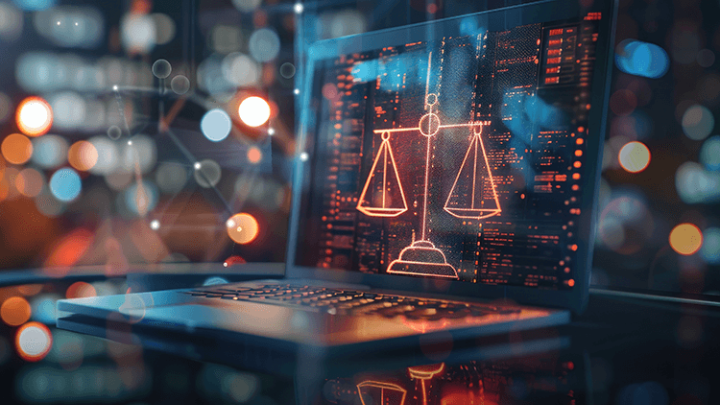The Rise of Autonomous AI in Cybersecurity
Explore how autonomous AI is reshaping cybersecurity, presenting both threats and innovative defense strategies in the digital arms race.

The Rise of Autonomous AI in Cybersecurity
The cybersecurity landscape is rapidly evolving as autonomous AI hacking emerges as both a significant threat and a transformative tool in defense strategies. Autonomous AI refers to artificial intelligence systems capable of independently conducting complex tasks such as reconnaissance, vulnerability scanning, exploitation, and even decision-making without human intervention. This evolution is reshaping how cyberattacks are executed and how organizations defend themselves, marking a new era in the cybersecurity arms race.
What Is Autonomous AI Hacking?
Autonomous AI hacking involves AI-powered agents that operate independently and adaptively to identify system weaknesses and launch attacks with minimal or no human oversight. Unlike traditional automated tools that follow predefined scripts, autonomous AI leverages agentic AI—systems that make contextual decisions, plan multi-step operations, and collaborate with other AI agents to achieve complex objectives.
For example, Ridge Security’s RidgeGen framework transforms its flagship product, RidgeBot, into a multi-agent ecosystem that autonomously performs sophisticated offensive security tests across IT, operational technology (OT), and AI-driven environments. RidgeBot powered by RidgeGen can conduct reconnaissance, exploit chaining, and threat modeling in a context-aware manner, learning and adapting as it operates. This represents a leap from simple automation to true autonomy in offensive cybersecurity.
Implications for Cybersecurity Defense
The rise of autonomous AI hacking presents a dual challenge to cybersecurity:
-
Attackers harness autonomous AI to discover vulnerabilities faster and launch more complex, coordinated attacks. This includes advanced tactics like AI-driven phishing, exploitation of AI model vulnerabilities such as prompt injection or model poisoning, and automated exploitation of zero-day flaws.
-
Defenders must deploy AI-driven tools that can keep pace with these threats, moving beyond traditional manual penetration testing. AI penetration testing companies like Penligent and PentestGPT are pioneering solutions that use AI to probe AI systems themselves, identifying unique attack vectors and providing continuous, scalable protection.
Use Cases of AI in Cybersecurity
AI is already being used for various defensive applications:
-
Account takeover (ATO) prevention: AI models monitor login behaviors to detect anomalies such as unusual times of access or new devices. For instance, Memcyco’s platform helped a global bank reduce ATO incidents by 65% by identifying phishing sites in real-time and alerting users before attackers could exploit stolen credentials.
-
Identity and access management for non-human identities: Enterprises now face security challenges from thousands of non-human identities like service accounts, API tokens, and autonomous AI agents that operate continuously with broad permissions and minimal oversight. Modern identity platforms scan for hidden tokens and over-permissioned roles, enabling governance and risk reduction through real-time inventories and automated lifecycle management.
Challenges and Risks of Autonomous AI Agents
The proliferation of autonomous AI agents introduces new blind spots for security teams:
-
Lack of clear ownership and intent: Unlike human users, AI agents don’t log in/out or follow traditional lifecycle events, complicating access control and risk management.
-
Broad permissions with limited oversight: Many autonomous agents operate with expansive privileges, increasing the potential blast radius in case of compromise.
-
Difficulty in detecting anomalous behavior: Autonomous agents can make decisions and adapt dynamically, requiring advanced monitoring tools and "kill switches" to terminate sessions immediately if suspicious activity is detected.
Industry Response and Future Directions
The cybersecurity industry is responding by accelerating innovation in AI-driven security validation and governance:
-
Autonomous security validation platforms like RidgeGen enable continuous, intelligent offensive testing that helps organizations preemptively discover and remediate vulnerabilities before attackers do.
-
AI penetration testing firms specialize in red-teaming AI systems to uncover new vulnerabilities unique to AI architectures, strengthening defenses against emerging threats.
-
Identity security fabrics are being deployed to manage and secure the growing number of non-human identities, ensuring least privilege access and automated credential rotation.
As autonomous AI hacking capabilities grow more sophisticated, organizations must adopt proactive, AI-empowered cybersecurity strategies that integrate offensive and defensive AI tools. This shift from reactive to proactive governance is essential to maintain trust and resilience in increasingly AI-driven digital ecosystems.
In summary, autonomous AI hacking marks a paradigm shift in cybersecurity, where AI agents autonomously discover and exploit vulnerabilities, forcing defenders to innovate rapidly with AI-powered validation, identity governance, and continuous monitoring solutions. The future of cybersecurity will be defined by how effectively organizations can harness AI not only to defend but also to anticipate and counter autonomous AI-driven threats.



